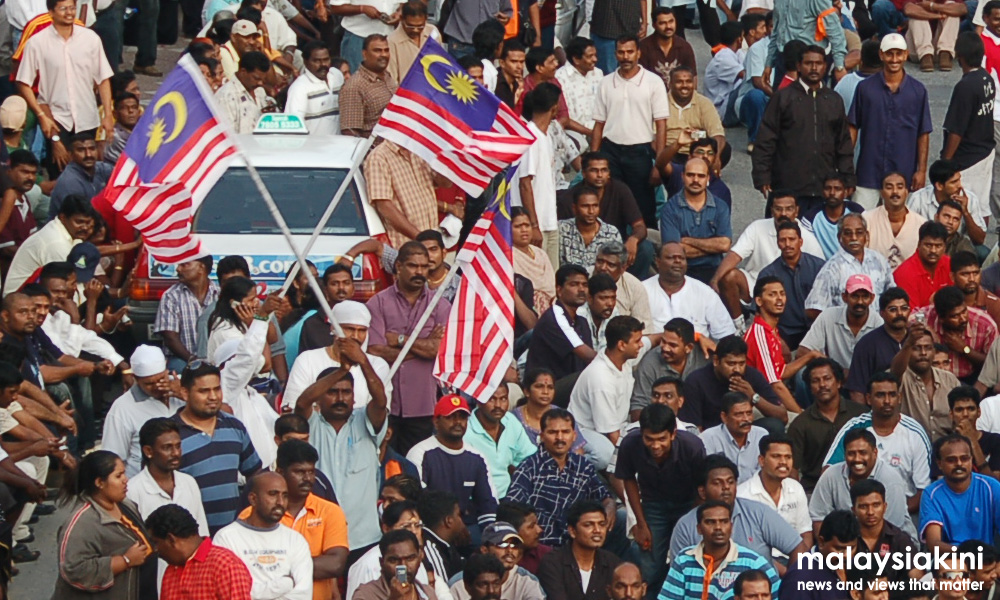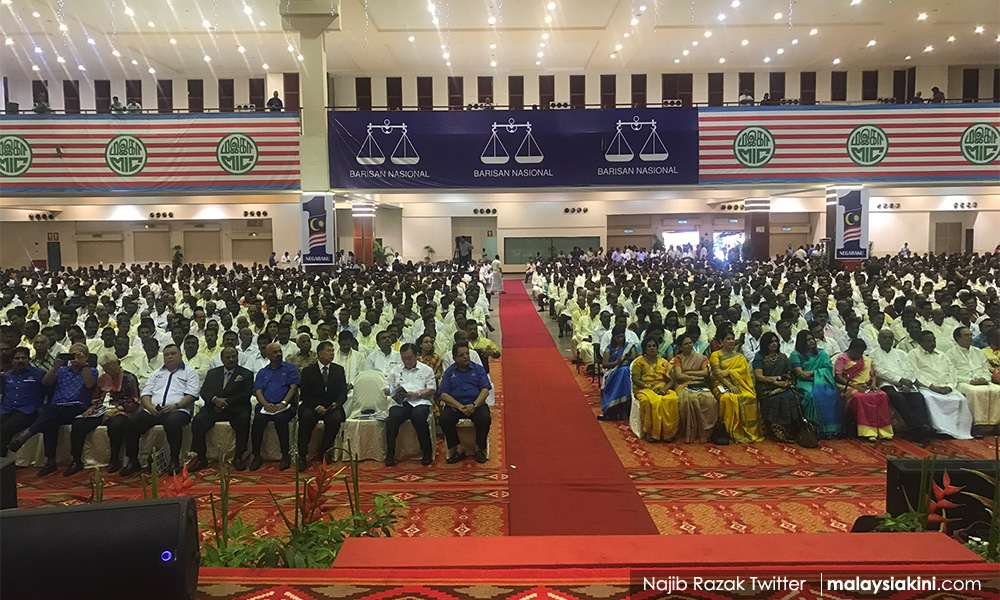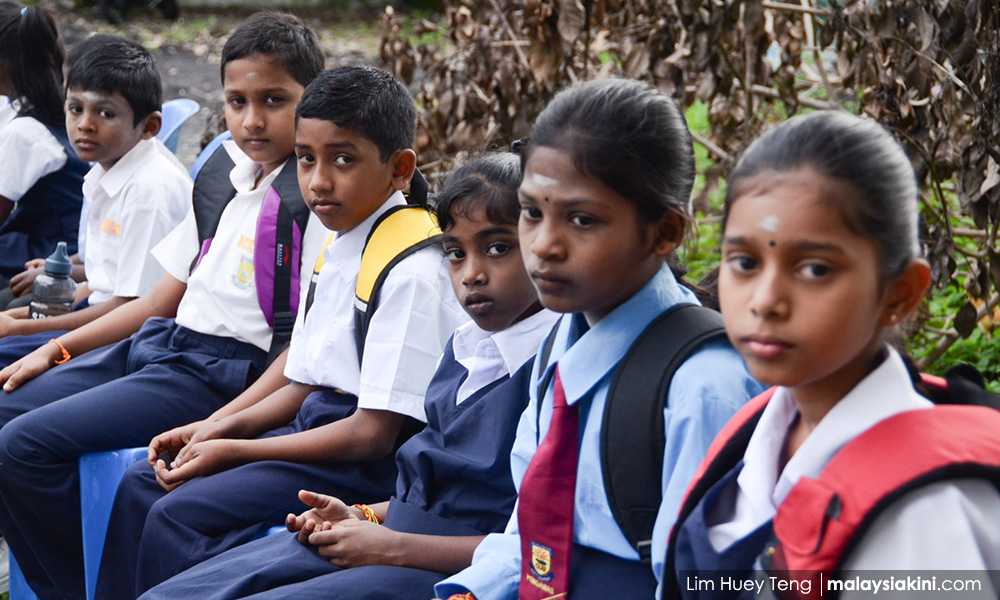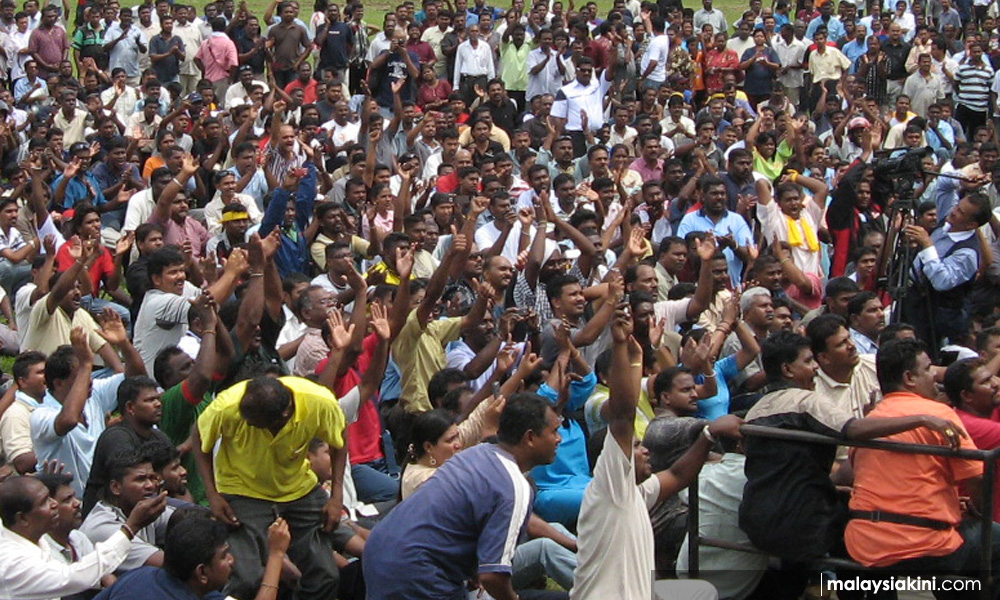
QUESTION TIME | Prime Minister Najib Razak recently said that Indians should have “nambikai” (Tamil for 'faith') in BN as the only party capable of ruling the country. He added Indians who had never been marginalised by the government, should have confidence in BN’s capability based on the concept of "Naalai namathey, naalum namathey", which means "Tomorrow is ours, the future is ours".
But is that really true? Has the Indian community benefited and prospered under BN? Or is that so much nonsense being thrown into the wind in the hope that some of it will land on some Indians who will come to actually believe it? Let’s see.
Most of the Indians in the country came from a plantation background, with their forefathers being recruited under harsh and extreme conditions as indentured labour from India by the British colonialists.
According to one study: “The Indians were the most marginalised of workers. They resided in closed plantation societies in frontier zones and the plantation symbolised the boundary of their existence.”
This was in the 1900s. But did things improve for the Indians after independence in 1957? No. Even the government conspired to deny these poor and deprived Indians, without whose toil the country would not have developed, an opportunity for citizenship.

“The government also made it compulsory (through the Employment Restriction Act 1968) for non-citizens to apply for work permits for about 2,000 employment categories. These included the plantation industry, railways and municipal services, all of which were dominated by Indians. The Indians’ work permits were non-renewable and consequently 60,000 Indians left for India,” the study said.
Thus, many Indians, who played a key part in the development of the rubber and oil palm industry, and who toiled in the sun building roads, bridges, and railways, and working as general labour were forced to leave the country.
Even as far back as 1968, BN and its predecessors systematically discriminated against Indians. The low level of education and lack of economic muscle among them meant that they could not fight for themselves.
As if that was not bad enough, the government then liberalised procedures for the import of foreign labour, particularly Indonesians, into the plantation sector, which peaked in the 80s. This depressed plantation wages, impoverishing an already poor community and forcing them out of the estates to urban ghettos in the hundreds of thousands.
“During an initial phase, the government surreptitiously allowed local contractors/intermediaries to recruit Indonesian workers from the Indonesian squatter settlements in Kuala Lumpur and the Klang Valley.
“Subsequently both regular and irregular migrants formed the nucleus of less-skilled foreign workers in the oil palm plantations during this period,” the study said.

Lacking the means to make a living, and with no help from an impotent MIC and the BN government, many Indians turned to a life of crime. Some of them were brutally killed in police stations, some showing signs of torture.
Cow head incident
One such case was that of A Kugan in 2009 who had multiple injuries on his body. Until today, the BN government has not implemented a recommendation to form an Independent Police Complaints and Misconduct Commission (IPCMC) which would have helped stop extrajudicial killings by ensuring independent investigation into deaths attributed to the police.
Kugan’s mother took to the courts to obtain justice and a judgment was given against the government and the police over the killing. But in a clear case of uncaringness towards the killing of an Indian in police custody, the government appealed the case.
It took opposition PKR to speak against the appeal which would prolong the suffering of Kugan’s family. According to a report, PKR said that the federal government had acted "inhumanely" by appealing against the High Court's ruling on the suit brought by custodial death victim A Kugan's mother against the police and the government. MIC remained silent.

There are other incidents - the list can go on and on. The violent putdown of Hindraf demonstrations in 2007 in Kuala Lumpur - which resulted in a never before seen swing of Indian votes to the opposition in 2008, the Kampung Medan racial clashes of 2001 where a disproportionate number of Indians were killed and injured – an incident described as the worst since May 13, 1969, the earlier vandalism of Hindu temples and the subsequent demolition of the same, the infamous cow head incident of 2009, the prolonged Indira Gandhi conversion case, and many other acts of degradation and violence towards Indians which the BN government never addressed.
Despite all their problems and impoverishment, the Indians continued to be ignored in terms of opportunities to advance. In September 2013, after BN under Najib won the general elections, the number of Indians admitted to government-funded universities was 4 percent, compared to 8 percent a decade ago and 7 percent of the population.
Of the 41,573 places in government-funded universities available, 19 percent were awarded to ethnic Chinese (23 percent of the population) and 4 percent to ethnic Indians (7 percent of the population). The rest of the seats - 70 percent - were mainly allocated to bumiputera (60 percent of the population), the BBC reported.

Worse still, according to a research by Khazanah Nasional Bhd, despite the government’s strategic development fund for Indians born to parents without formal education, only five percent of them have tertiary education. That is way below the numbers for the bumiputera (33 percent) and ethnic Chinese (44 percent).
Despite that, the government continues to give way less than their population share to the Indians, putting them down into a spiral of poverty from which it would be near impossible to come out of.
Gap widening
If Indians need more evidence that the BN has been bad for them, here’s some. How many BN Indian MPs are there? Four. How many opposition Indian MPs are there? Nine - over two times.
Incredibly, 10 percent of opposition MPs are Indians but just 3 percent of government MPs are Indian. In the government, only one minister out of the 35 is Indian.
Successive opposition Indian MPs, which include all the nine current ones, have done far more towards the defence of legitimate Indian interests than their MIC counterparts who remain silent in the face of oppression, in effect becoming co-conspirators in the government's discrimination against Indians.

The sad fact is that Indians in Malaysia, undoubtedly the poorest at the time of independence of any group, still remain the most deprived after more than six decades, with the gap between them and the rest widening.
While government statistics show median incomes for Indians are higher than for bumiputera, there is much doubt about the reliability of the information.
It does not take into account extreme poverty in Sabah and Sarawak which involves mainly non-Malay bumiputera, and it does not adjust for differences in living costs between urban and rural areas.
It is clear that the Indians have been systematically discriminated against and routinely humiliated since the time of Tunku Abdul Rahman right through to the period of Najib Abdul Razak. For them, “nambikai” in BN should have evaporated into thin air a long time ago.
Indian Malaysians are unlikely to find compassion and redress for their past, present and future suffering under BN, which leaves them with just the other alternative.
P GUNASEGARAM says racial inequity was never only about the Malays. Email: t.p.guna@gmail.com - Mkini



No comments:
Post a Comment
Note: Only a member of this blog may post a comment.